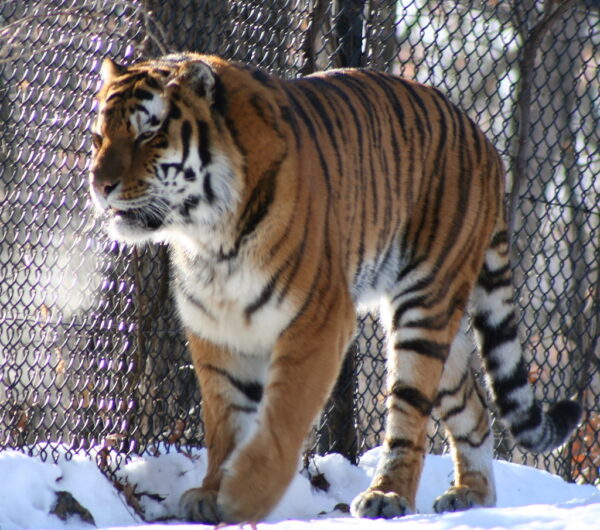Amur tigers, also known as Siberian tigers, are a subspecies of tigers native to the Russian Far East, Northeast China, and possibly North Korea. They are the world’s largest cats, weigh up to 450 pounds, and grow 10 feet long from head to tail. Males are larger than females, with males weighing up to 660 pounds and females weighing up to 370 pounds.
Where Are Amur Tigers From?
Amur tigers are found primarily in eastern Russia’s birch forests, though some exist in China and North Korea. The Amur River is where its name comes from; it is the longest river in the Russian Far East region and forms part of the border between Russia and China.
Habitat
Amur tigers live in the forest and bush-covered mountains in eastern Russia, China, and North Korea. They prefer areas with dense covers, such as tall grasses, reeds, thickets, or shrubs, for stalking prey. They also need access to water sources such as rivers or lakes for drinking and bathing.
Feeding Habits
Amur tigers mainly feed on medium-sized ungulates such as deer, wild boar, elk, or moose. They will also eat smaller animals, such as hares or rodents, if necessary. They hunt by ambush rather than chasing their prey over long distances like other cats do.
Migration Patterns
Amur tigers typically stay within a home range of about 20 square miles throughout their lives but may travel farther during migration season when food is scarce or they are looking for mates. During these migrations, they may travel hundreds of miles at a time before returning home again.
Social Habits
Amur tigers are solitary animals that only come together during mating season, usually between November and April. Females typically give birth to two or three cubs after a gestation period of 105 days. They raise alone until they reach maturity at around three years old, when they disperse from their mother’s territory to find their home range.


